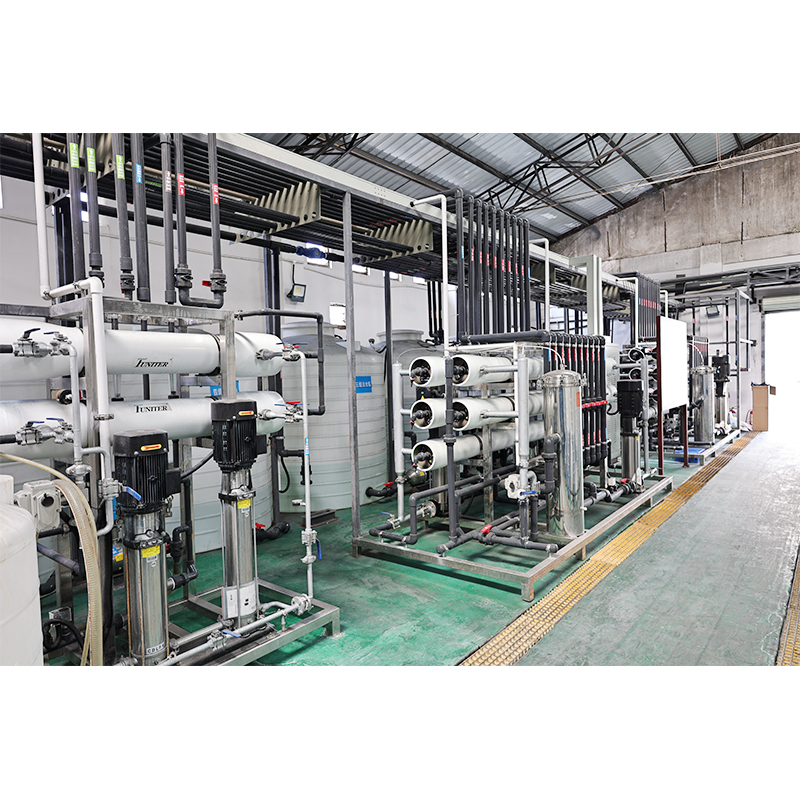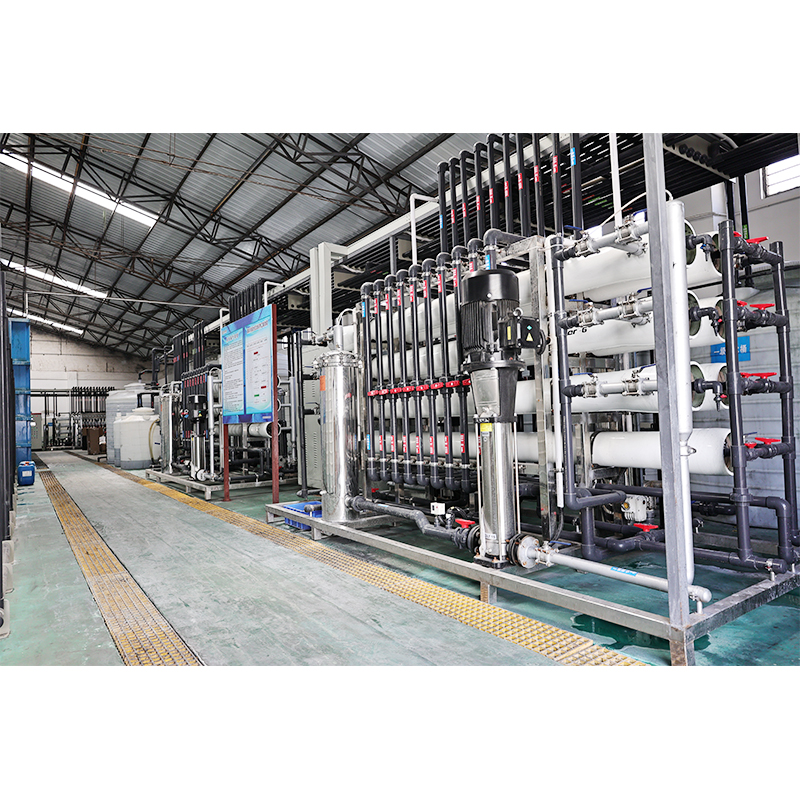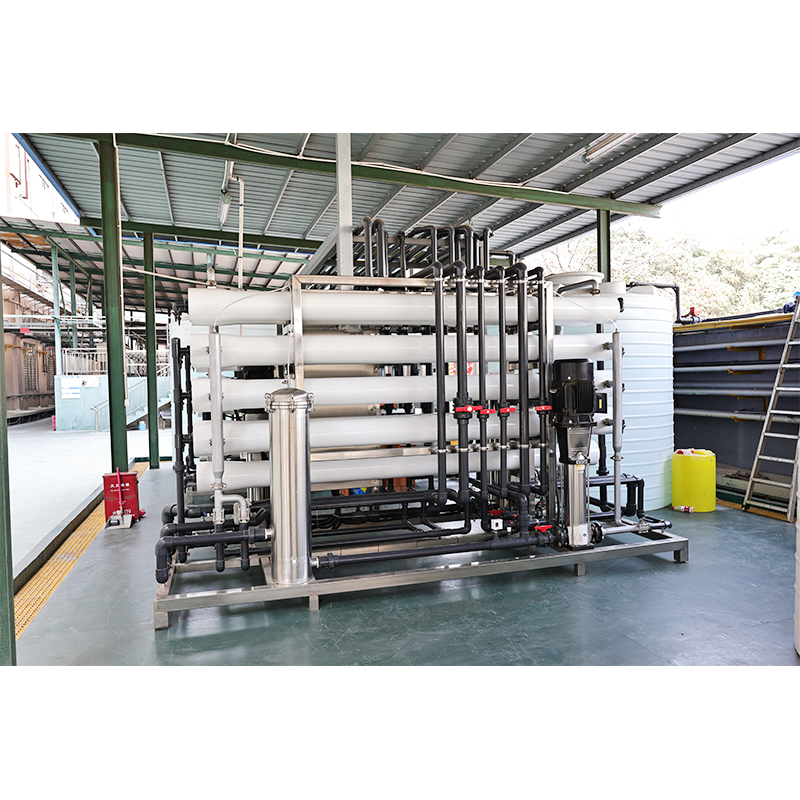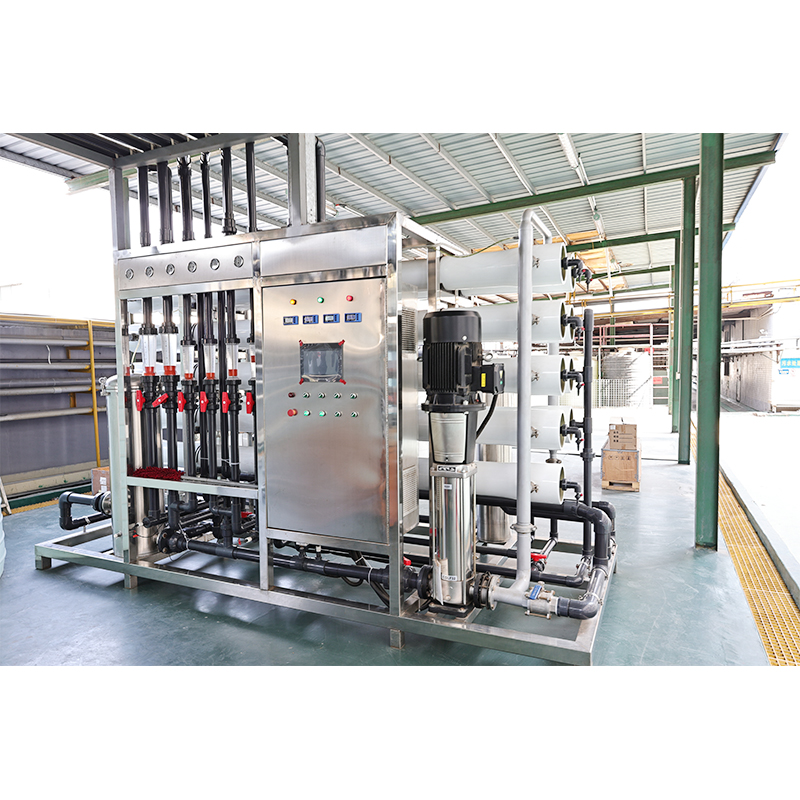How does the pretreatment process of sea water industrial ro membrane affect its service life?
Release Time : 2025-05-28
As the core component of seawater desalination, the service life of seawater industrial RO membrane directly affects the cost and efficiency of desalination. As the pre-treatment link of RO membrane operation, the pretreatment process removes impurities in seawater, regulates water quality, creates a suitable operating environment for RO membrane, and has a profound impact on its service life.
Seawater contains a large amount of suspended matter, colloids, microorganisms and other impurities. If these substances enter the RO membrane system directly without treatment, they will quickly deposit on the membrane surface to form a filter cake layer. The filtration links in the pretreatment process, such as multi-media filtration and ultrafiltration, can effectively intercept large particles of suspended matter and colloids. The quartz sand, anthracite and other filter materials in the multi-media filter remove the visible sediment, algae and other substances in the seawater through physical interception and adsorption; the ultrafiltration membrane uses the screening principle to intercept micron-level colloidal particles and macromolecular organic matter. If these filtration steps are missing, a large amount of impurities will quickly block the micropores of the RO membrane, resulting in a sharp drop in membrane flux. In order to maintain the water output, the operating pressure needs to be continuously increased, which will eventually accelerate the mechanical damage of the membrane and greatly shorten the service life.
Microorganisms in seawater are another major hidden danger that threatens the life of RO membranes. The disinfection link in the pretreatment process is crucial. Commonly used chlorination disinfection or ultraviolet disinfection can effectively inactivate bacteria, algae and other microorganisms in seawater. If the microorganisms are not effectively controlled, they will breed and multiply on the surface of the RO membrane to form a biofilm. The biofilm not only hinders the passage of water molecules, but also secretes extracellular polymers, which combine with other pollutants in seawater to form complex pollutants that are more difficult to remove. As the biofilm thickens, the operating pressure of the RO membrane continues to rise, the desalination rate decreases, and frequent chemical cleaning is difficult to completely restore the membrane performance. In the end, the RO membrane can only be replaced in advance.
Hardness ions (calcium, magnesium and other ions) and dissolved carbon dioxide in seawater will form insoluble salt precipitation such as calcium carbonate and calcium sulfate under certain conditions. The softening and pH adjustment steps in the pretreatment process can reduce the scaling risk of insoluble salts. By adding antiscaling agents, they can be combined with hardness ions to form stable complexes to prevent the growth of insoluble salt crystals; adjusting the pH value of seawater can change the carbonic acid balance and reduce the possibility of calcium carbonate precipitation. If these pretreatment steps are ignored, insoluble salts will crystallize and precipitate on the surface of the RO membrane to form a hard scale layer. Once the scale layer is formed, it will not only increase the operating resistance of the membrane, but also destroy the separation layer structure of the membrane, permanently damage the desalination performance of the RO membrane, and seriously shorten its service life.
The effect of the pretreatment process on the removal of organic matter in seawater also affects the life of the sea water industrial RO membrane. Humic acid, protein and other organic matter in seawater will be adsorbed on the surface of the RO membrane, and react physically or chemically with the membrane material, resulting in a decrease in the hydrophilicity of the membrane and flux attenuation. Most organic matter can be effectively removed by pretreatment methods such as activated carbon adsorption and ozone oxidation. The porous structure of activated carbon can adsorb small molecular organic matter, and ozone can oxidize and decompose large molecular organic matter into small molecules for subsequent treatment. If the organic matter in seawater is not effectively removed, they will continue to accumulate on the surface of the RO membrane to form an organic pollution layer, which increases the difficulty of chemical cleaning and irreversibly reduces the performance of the RO membrane under long-term action.
The stability and continuity of the pretreatment process are also crucial. A stable pretreatment system can continuously provide qualified inlet water quality for the RO membrane, avoiding the impact of water quality fluctuations on the RO membrane. For example, if the backwash cycle of the multi-media filter is unreasonable and the filter material is hardened, the turbidity of the effluent will increase; if the dosing system is not accurately metered and the scale inhibitor is not added enough, the risk of scaling will increase. These unstable factors will cause the RO membrane to frequently bear pollutant loads beyond the design range, accelerate the pollution and aging of the membrane, and shorten its normal service life.
Advanced pretreatment processes can also indirectly extend the life of sea water industrial ro membrane by optimizing operating parameters. Reasonable control of the operating flow rate, pressure and other parameters of the pretreatment system can not only ensure the treatment effect, but also reduce energy consumption and equipment wear. For example, appropriately reducing the operating flux of the ultrafiltration membrane can improve the membrane's anti-pollution ability, extend the ultrafiltration membrane's cleaning cycle, and thus ensure the stability of the RO membrane's inlet water quality. At the same time, the intelligent pretreatment control system can monitor water quality changes in real time, automatically adjust parameters such as dosing amount and backwash time, and create more ideal operating conditions for the RO membrane.
The pretreatment process of sea water industrial RO membrane affects its service life in many aspects. A perfect pretreatment process can effectively remove various pollutants in seawater, reduce the risk of membrane contamination, maintain the stable operating performance of RO membrane, and thus significantly extend its service life. On the contrary, if the pretreatment process is improper or missing, the RO membrane will be frequently replaced due to rapid contamination and performance degradation, increasing the cost and maintenance difficulty of seawater desalination. Therefore, paying attention to the design, operation and optimization of the pretreatment process is the key to ensuring the long-term stable operation of the RO membrane.







